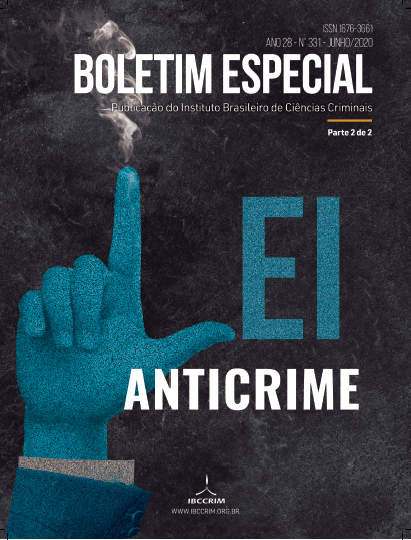Trends of the post-neoliberal criminal policy
Views: 86Keywords:
Criminal policy, Globalization, Neoliberal penalism, Post-neoliberal penalism, Anti-crime BillAbstract
The general object of study in this article are the major political-criminal movements of the post-World War II period. Specifically, the trends of contemporary criminal policy under the significant influence of neo-liberal penalism - of North American origin - in the final quarter fo the 20th century. The central objectives are first, to discuss the new direction of global criminal policy in the midst of the crisis of the neo-liberal model, and second, Brazilian policy in the context of the recent Law n. 13.963 (the “Anti-crime Bill”).
Downloads
Publication Facts
Reviewer profiles N/A
Author statements
- Academic society
- Instituto Brasileiro de Ciências Criminais
- Publisher
- IBCCRIM
References
SANZ MULAS, Nieves. Manual de política criminal. Trad. Luiz Renê G. do Amaral e Marna Franco Lopes M. Filizola. Florianópolis: Tirant lo Blanch, 2019. p. 15.
YOUNG, Jock. A sociedade excludente: exclusão social, criminalidade e diferença na modernidade recente. Trad. Renato Aguiar. Rio de Janeiro: Revan, 2002. pp. 18-19.
GARLAND, David. A cultura do controle: crime e ordem social na sociedade contemporânea. Trad. André Nascimento. Rio de Janeiro: Revan, 2008.
DIETER, Mauricio Stegemann. Política criminal atuarial: a criminologia do fim da história. Rio de Janeiro: Revan, 2013. p. 52.
GARLAND. David. A cultura..., op. cit., p. 22.
WACQUANT, Löic. As prisões da miséria. Trad. André Telles. Rio de Janeiro: Revan, 2001. pp. 24-25.
SILVA FRANCO, Alberto. Crimes hediondos. 6.ed. São Paulo: Revista dos Tribunais: 2010. p. 85.
BAUMAN, Zygmunt. Globalização: as consequências humanas. Trad. Marcus Penchel. Rio de Janeiro: Jorge Zahar Ed., 1999. pp.119-120.
LÖIC, Wacquant. The Wedding of Workfare and Prisonfare Revisited. In: Social Justice 38, 1-2 (2011-12), pp. 203-221.
Downloads
Published
How to Cite
Issue
Section
License
Copyright of published articles belongs to the author, but with journal rights over the first publication and respecting the one-year exclusivity period. Authors may only use the same results in other publications by clearly indicating this journal as the medium of the original publication. If there is no such indication, it will be considered a situation of self-plagiarism.
Therefore, the reproduction, total or partial, of the articles published here is subject to the express mention of the origin of its publication in this journal, citing the volume and number of this publication. For legal purposes, the source of the original publication must be consigned, in addition to the DOI link for cross-reference (if any).


 Português (Brasil)
Português (Brasil)
 English
English
 Español (España)
Español (España)






